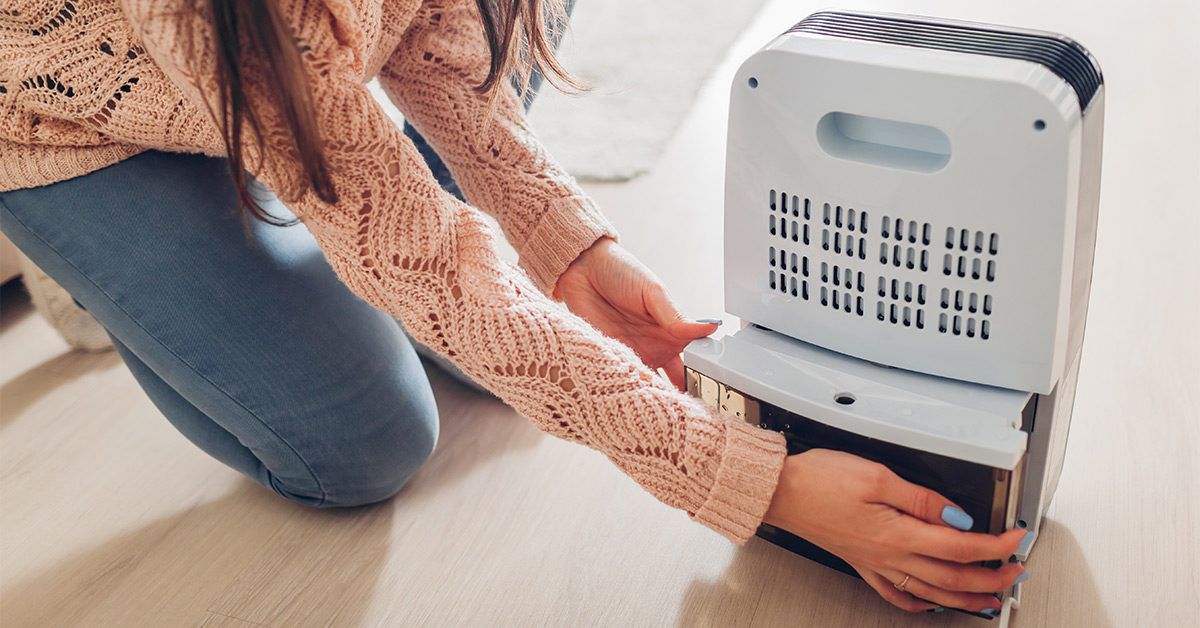Excess humidity can wreak havoc on your home, causing issues such as mold growth, musty odors, and damage to furniture and belongings. The solution to combat high humidity levels lies in a reliable interior dehumidifier. However, the effectiveness of these devices depends significantly on their placement within your living space.
In this comprehensive guide, we will explore the key considerations for where to place your interior dehumidifier to ensure optimal performance and a healthier indoor environment.
Understanding the Need for a Dehumidifier:
Before delving into the specifics of placement, it’s essential to understand why dehumidifiers are necessary in the first place. High humidity levels can lead to a myriad of problems, including mold and mildew growth, dust mites, and even structural damage to your home. Dehumidifiers work by extracting excess moisture from the air, helping to maintain a comfortable and healthy indoor environment.
Key Considerations for Placement:
1. Central Location:
Placing your dehumidifier in a central location ensures that it can effectively cover a larger area of your home. This is especially important if you are dealing with high humidity throughout multiple rooms. Consider placing the dehumidifier in a hallway or a central living space to achieve optimal results.
2. Proximity to Problem Areas:
Identify specific areas in your home that are more prone to high humidity, such as basements, bathrooms, or laundry rooms. Placing the dehumidifier in close proximity to these problem areas can help target and address the source of moisture more efficiently.
3. Ventilation and Airflow:
Adequate ventilation is crucial for the optimal performance of a dehumidifier. Ensure that the chosen location allows for proper airflow and is not obstructed by furniture or other items. Good air circulation helps the dehumidifier extract moisture from a larger volume of air.
4. Elevation and Ground Clearance:
Elevating your dehumidifier slightly can enhance its efficiency. Moisture tends to accumulate near the ground, so placing the device at an elevated position, like on a table or shelf, can help it capture moisture more effectively. Additionally, ensure that the dehumidifier has sufficient ground clearance for air intake and exhaust.
5. Near Water Sources:
For areas with high moisture levels, such as bathrooms and kitchens, consider placing the dehumidifier near water sources like sinks or showers. This strategic placement can help prevent the development of mold and mildew in these moisture-prone zones.
6. Size of the Room:
Matching the capacity of the dehumidifier to the size of the room is crucial for optimal performance. Larger rooms or open-concept spaces may require a more powerful unit, while smaller rooms can be adequately served by a compact dehumidifier. Always check the manufacturer’s recommendations for the appropriate coverage area.
7. Temperature Considerations:
Dehumidifiers are generally more effective in warmer environments. If possible, place the device in a room with a higher temperature to enhance its moisture-extraction capabilities. However, be mindful of the recommended operating temperature range specified by the manufacturer.
8. Noise Levels:
Consider the noise level of the dehumidifier, especially if you plan to place it in a bedroom or a frequently used living space. Some models are designed to operate quietly, making them suitable for spaces where noise may be a concern.
9. Drainage Options:
Dehumidifiers come with different drainage options, such as manual emptying, gravity drainage, or using a pump. If your dehumidifier has a built-in pump, you have more flexibility in choosing its placement, as it can pump water to a drain or an elevated outlet.
10. Monitoring and Accessibility:
Place the dehumidifier in a location that allows easy access for monitoring and maintenance. Regularly check the water reservoir, clean or replace filters, and ensure that the unit is operating optimally. Accessibility is key to the long-term effectiveness of your dehumidifier.
Additional Considerations for Optimal Dehumidifier Placement:
1. Relative Humidity Monitoring:
Invest in a hygrometer to measure the relative humidity levels in different areas of your home. Place the dehumidifier in areas where humidity levels tend to be consistently high. This data-driven approach ensures that you are targeting the specific spaces that require the most attention.
2. Furniture and Obstructions:
Avoid placing the dehumidifier behind or directly against furniture, curtains, or other obstructions. These items can impede airflow and reduce the unit’s overall effectiveness. Maintain a clear space around the dehumidifier to allow for efficient air circulation.
3. Directional Airflow:
Consider the directional airflow of the dehumidifier. Some models have adjustable louvers or vents that allow you to direct the dry air output strategically. Position the dehumidifier in a way that allows the dry air to circulate effectively throughout the room, reaching all corners and surfaces.
4. Windows and Doors:
If possible, place the dehumidifier near windows and doors, as these areas are prone to moisture infiltration. High humidity levels can lead to condensation on windows, creating an environment conducive to mold growth. Targeting these specific areas can help prevent such issues.
5. Usage Patterns:
Consider the usage patterns of different rooms in your home. If certain rooms are used less frequently or are closed off for extended periods, placing a dehumidifier in these spaces can prevent stagnant air and moisture buildup. This is particularly important for guest rooms or storage areas.
6. Exterior Walls and Insulation:
Exterior walls are more susceptible to moisture infiltration, especially in regions with high humidity or inclement weather. Place the dehumidifier near exterior walls to counteract the potential moisture impact. Additionally, ensure proper insulation to minimize the chances of condensation.
7. Crawl Spaces and Attics:
For homes with crawl spaces or attics, consider placing a dehumidifier in these areas to prevent moisture from migrating into the living spaces. Controlling humidity in these often overlooked spaces can contribute to the overall health of your home and reduce the risk of structural issues.
8. Seasonal Adjustments:
Be mindful of seasonal changes in humidity levels. In regions with distinct seasons, you may need to adjust the placement of the dehumidifier accordingly. During the warmer months, focus on areas prone to high humidity, while in colder months, pay attention to potential condensation points.
Conclusion
In conclusion, the placement of an interior dehumidifier is a critical factor in ensuring its effectiveness in controlling humidity levels within your home. By strategically positioning the device based on considerations such as central location, proximity to problem areas, ventilation, and other key factors, you can create a healthier and more comfortable indoor environment.
Regular monitoring and maintenance are equally important to guarantee the continued efficiency of your dehumidifier. Take the time to assess your home’s specific needs and follow these guidelines to make the most of your investment in a reliable interior dehumidifier.
Also Read: What is the Best Material for a Hot Water Bottle Cover?




